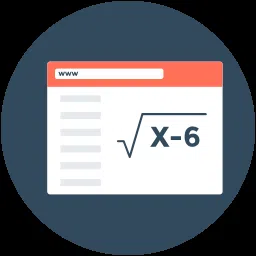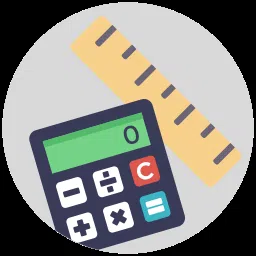GMAT Questions
Preparing for the GMAT can be very stressful; however, it is not necessary. The secret to a high score is to understand the question formats and adopt a proper approach to solving them. Whether you’re just starting your prep or brushing up before exam day, this guide will help you get comfortable with what’s ahead. Read until the end and gain a better understanding of what GMAT questions and solutions look like, as well as tips for GMAT 2026 preparation.

GMAT Percentage Questions
GMAT Percentage Questions are an important part of the Quantitative section, testing your ability to work with percentage calculations in various scenarios. To prepare for percentage problems, we help you practice different types of questions

GMAT Algebraic Expressions Questions
GMAT Algebraic Expressions tests your skills in simplifying, factoring, and solving variable-based expressions. Strong basics help you solve these questions faster and accurately.

GMAT Data Sufficiency Questions
GMAT Data Sufficiency Questions test if you can tell whether the information given is enough to answer a question. You don’t need to solve it, just check if it’s possible.

GMAT Profit & Loss and Discount Questions
GMAT Discount and Profit Questions focus on real-world business math. You'll work with concepts like cost price, selling price, discount, and profit or loss. These questions test your ability to apply formulas quickly

GMAT Linear Equations Questions
GMAT Linear Equations questions are the most important part of the Quantitative section, where you’ll need to solve equations involving variables. These questions test your understanding of algebra and your ability to work with relationships between numbers.

GMAT Functions Questions
GMAT Functions Questions play an important role in the Quant section, testing your understanding of algebra and how functions work. You’ll solve problems using formulas, inputs, and outputs to find correct values.

GMAT Inequalities Questions
Solving GMAT Inequalities Questions can be tricky, but with the right preparation, it becomes easier. This includes a wide variety of inequality questions that will help you improve your skills

GMAT Time Speed and Distance Questions
GMAT Distance and Speed questions test how well you use the formula: distance = speed × time. You'll solve problems with different speeds, times, and conditions.

GMAT Interests Questions
GMAT Interest questions are an important part of the Quantitative section, where you’ll need to calculate both simple and compound interest. These questions test your understanding of how interests increase in amount

GMAT Mixtures Questions
GMAT Mixtures Questions are an important part of the Quantitative section, often requiring you to combine different substances or quantities. These problems involve ratios, percentages, and arithmetic.

GMAT Sets and Counting Method Questions
GMAT Sets and Counting Method Questions are an important part of the Quantitative section, testing your ability to work with sets, combinations, and permutations. These questions often involve counting possibilities and organising data in different ways.

GMAT Probability Questions
GMAT Probability Questions are the most important part of the Quantitative section, testing your ability to calculate the likelihood of events. These problems often involve concepts like combinations, permutations, and basic probability rules.

GMAT Ratio and Proportion Questions
GMAT Ratio and Proportion Questions are an important part of the Quantitative section, where you will need to calculate and analyse the relationship between two or more values. These questions often test your ability to apply ratios, proportions, and scaling in different situations.

GMAT Time and Work Questions
GMAT Work and Rate Questions are designed to test your ability to calculate how much work is completed over time, whether by one person, multiple people, or machines. These problems often involve combining different rates and calculating the total time required for tasks.
Benefits of Practicing GMAT Questions
Practicing GMAT questions before the real exam helps in many ways. Here are a few benefits of practicing GMAT questions:
1. It builds familiarity with the exam, as you get to know the types of questions that you will face in the exam and how they’re structured.
2. Improves speed and accuracy because regular practice helps you solve questions faster and with fewer mistakes.
3. Strengthens problem-solving skills, as you will learn to think logically, break down problems, and choose the best method quickly.
4. Improves confidence, as the more questions you practice, the more comfortable you feel on exam day.
5. Solving more questions will help you identify your weak areas, and you will get an understanding of questions where you struggle. So you can focus your study time wisely.
6. Helps to improve time management. You learn how to allocate time across different sections without feeling rushed.
7. Practicing more also helps you improve your score, as practice directly translates into better performance and a higher GMAT score.
What is available in GMATPoint GMAT Questions?
GMATPoint offers free GMAT questions, organised by topic, with detailed solutions, and provides a downloadable PDF containing the questions and formulas for each topic. It's a great way to build your skills, improve speed, and prepare effectively for the GMAT exam.
Here’s what you’ll get:
1. Questions are grouped by topic, like percentages, equations, speed & distance, ratios, probability, and more.
2. Every topic comes with answers and solutions, so you can learn from your mistakes.
3. You can download the PDFs and practice anytime, even without the internet.
4. The questions match the style and difficulty of real GMAT questions.
5. Many of the resources are free, so you can start learning without paying.
6. It helps you understand key topics and improve your speed for the test.
Tips for GMAT 2026 Preparation
While preparing for any exam, it’s always important to have a proper plan, even before you start learning any chapter or any subject. To help you start your preparation, below are the tips for GMAT 2026 preparation:
1. Understand the exam pattern early: Know what each section, i.e., Quant, Verbal, and Data Insights, will be expected in the exam.
2. Start with a baseline mock test: Take one full mock to understand your current level and identify strengths and weaknesses.
3. Build strong fundamentals: Revise basics in math (algebra, arithmetic, word problems) and grammar (sentence structure, logic).
4. Follow a study plan: Set a daily/weekly schedule for topics, practice, and revision to stay consistent.
5. Focus on Data Insights early: DI is gaining importance in the new GMAT Focus Edition, like practising charts, tables, and reasoning regularly.
6. Practice timed sets: Build speed by solving questions in time-bound mini-tests.
7. Analyse your mistakes: Simply don't go through the questions; look at the answers, and figure out why a particular solution was incorrect.
8. Sharpen your weak points: Spend more time on the subjects that puzzle you rather than on those in which you are already proficient.
9. Practice with good mock tests: Start taking 6-8 full mocks, and it will help you to improve stamina and time management.
10. Work on elimination techniques: Learn to remove unlikely options in Verbal and DI to improve accuracy.
11. Stay consistent: Study smaller portions daily rather than cramming once a week.
12. Revise regularly: Keep revisiting formulas, rules, and common question patterns.
13. Stay calm and healthy: Sleep well, eat well, and take breaks. A fresh mind performs better on the GMAT.
Common Mistakes in GMAT Questions and How to Avoid Them
Candidates who prepare for any exam, be it the GMAT or any other, end up making mistakes that may cost them marks. Sometimes they know their mistakes but don’t know how to avoid or resolve them. Read below about the common mistakes and how to avoid them:
| ⚠ Mistake: | Skimming too fast and missing key details like “except,” “least,” or “must.” |
|---|---|
| ✔️ How to avoid: | Slow down for the last line of every question and underline keywords. |
| ⚠ Mistake: | Turning an easy question into a complicated one. |
|---|---|
| ✔️ How to avoid: | Look for the simplest method first; GMAT rewards clarity, not complexity. |
| ⚠ Mistake: | Jumping to the answer that feels right. |
|---|---|
| ✔️ How to avoid: | Use the process of elimination remove 2-3 wrong choices before deciding. |
| ⚠ Mistake: | Spending too long on one question and rushing the rest. |
|---|---|
| ✔️ How to avoid: | Follow the “maximum 2 minutes” rule and move on when stuck. |
| ⚠ Mistake: | Trying advanced questions without a strong background in math or grammar. |
|---|---|
| ✔️ How to avoid: | Revise core concepts early—fractions, equations, logic, grammar rules. |
| ⚠ Mistake: | Guessing without a strategy when unsure. |
|---|---|
| ✔️ How to avoid: | Eliminate obvious wrong answers to make an educated guess. |
| ⚠ Mistake: | Solving lots of questions but not learning from errors. |
|---|---|
| ✔️ How to avoid: | Maintain an error log and revisit incorrect questions weekly. |
| ⚠ Mistake: | Switching between books, apps, and websites without finishing any |
|---|---|
| ✔️ How to avoid: | Stick to 2-3 reliable sources like GMATPoint Questions, mocks, and one question bank. |
| ⚠ Mistake: | When a difficult question is seen, confidence is lost. |
|---|---|
| ✔️ How to avoid: | Keep in mind that it is not necessary to answer all questions perfectly; be calm and continue. |
| ⚠ Mistake: | Lessening the importance of DI, which is a significant part of the GMAT Focus Edition. |
|---|---|
| ✔️ How to avoid: | How to avoid: Practice charts, tables, and multi-step reasoning regularly. |